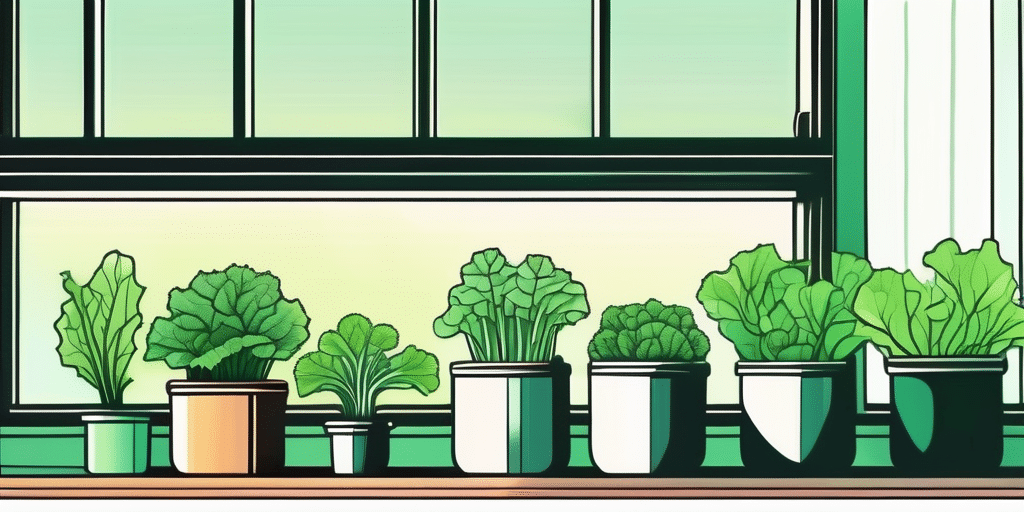When it comes to lettuce, many people only think of the common iceberg variety. However, there are numerous other types of lettuce that can add flavor, color, and texture to your salads and sandwiches. In this comprehensive guide, we will explore some of the best and most popular lettuce varieties, their unique characteristics, and how to grow them.
Understanding Lettuce Varieties
Before we delve into the specifics of each variety, it’s important to understand that lettuce can be broadly categorized into four types: looseleaf, romaine, butterhead, and crisphead. Each of these categories has numerous varieties with unique flavors, textures, and nutritional profiles.
Looseleaf lettuce, as the name suggests, does not form a compact head. Instead, it has loose, open leaves that can be easily harvested as needed. Romaine lettuce, also known as cos, forms long, upright heads. Butterhead lettuce, which includes Boston and Bibb lettuces, forms loose heads with soft, buttery-textured leaves. Crisphead lettuce, the most well-known of which is iceberg, forms tight, dense heads with crisp, watery leaves.
Top Lettuce Varieties
Now that we have a basic understanding of the different types of lettuce, let’s explore some of the best and most popular varieties within each category.
Looseleaf Lettuce
Looseleaf lettuce is appreciated for its ease of growth and the ability to harvest only what you need, leaving the rest of the plant to continue growing. Here are some top varieties:
- Green Leaf: This variety is known for its large, curly leaves with a mild flavor and crisp texture. It’s a versatile lettuce that can be used in a wide range of dishes.
- Red Leaf: Similar to green leaf but with reddish tips, this lettuce adds a splash of color to salads and has a slightly more pronounced flavor.
- Oak Leaf: Named for its oak leaf-shaped leaves, this variety comes in both green and red types. It has a tender texture and a slightly sweet flavor.
Romaine Lettuce
Romaine lettuce is a favorite for salads, especially Caesar salad, due to its crunchy texture and robust flavor. Here are some popular varieties:
- Parris Island Cos: Named after Parris Island off the coast of South Carolina, this variety has long, crisp leaves with a sweet and slightly bitter flavor.
- Jericho: A variety developed in Israel, Jericho is heat-tolerant and has sweet, crisp leaves.
Butterhead Lettuce
Butterhead lettuce is known for its tender, buttery leaves and mild flavor. Here are some top varieties:
- Boston: Also known as Butter or Bibb lettuce, Boston has small, round heads with soft, buttery-textured leaves.
- Summer Bibb: A heat-tolerant variety, Summer Bibb has tender, sweet leaves and is perfect for summer salads.
Crisphead Lettuce
Crisphead lettuce, particularly iceberg, is popular for its crisp texture and mild flavor. Here are some varieties to consider:
- Iceberg: Known for its large, round heads and crisp, watery leaves, iceberg lettuce is a favorite for salads and sandwiches.
- Great Lakes: A variety developed in the Great Lakes region, it is heat-tolerant and has large, crisp heads.
Growing Lettuce
Lettuce is a cool-season crop that can be grown in spring and fall, and many varieties can even tolerate a light frost. Here are some general steps for growing lettuce:
- Choose a location with full sun to partial shade and well-drained soil.
- Sow the seeds directly in the garden or start them indoors 4-6 weeks before the last spring frost date.
- Keep the soil consistently moist until the seeds germinate.
- Thin the seedlings to the recommended spacing once they are a few inches tall.
- Harvest the lettuce leaves when they reach the desired size. You can cut the entire plant or just take a few leaves at a time.
Remember, different varieties may have specific growing requirements, so it’s always a good idea to check the seed packet or consult a reliable gardening guide.
Health Benefits of Lettuce
Regardless of the variety, lettuce is a healthy addition to your diet. It’s low in calories and high in water content, making it a good choice for weight loss. It also provides important nutrients, including vitamin A, vitamin K, and folate.
According to the USDA Agricultural Research Service, dark green leafy vegetables like lettuce are an excellent source of dietary fiber, which can help reduce the risk of heart disease and certain types of cancer.
Conclusion
As you can see, there’s a whole world of lettuce varieties out there beyond the common iceberg. By trying different types, you can add variety to your meals and enjoy a range of flavors and textures. Plus, growing your own lettuce can be a rewarding experience and a great way to ensure you always have fresh, healthy greens on hand.
Join Our Green-Thumbed Community!
Ready to transform your salads with a garden full of diverse lettuce varieties? Subscribe for free to How to Grow Everything and learn how to build the garden of your dreams! Receive personalized gardening advice tailored to your grow zone and experience level. Enjoy the best gardening tips, special offers, and insights delivered straight to your inbox — with no spam, just our family’s commitment to helping yours grow everything better. Start your journey to a bountiful garden today!

